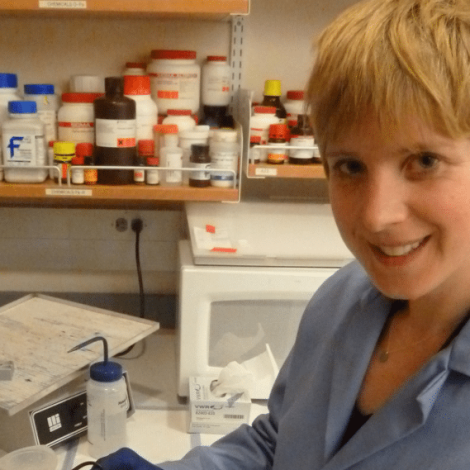Historically, “DIY lab equipment” was simply called “lab equipment,” when microbiologists and astronomers ground their own lenses and scientists were also mechanical engineers by necessity. Now, Nilsson and Tekla Labs are reinstating the practice. Nilsson’s background is in biomedical engineering and she is the Innovation Director of the Blum Center for Developing Economies at the University of California, Berkeley, where she is helping to instate “Development Engineering” as a new field of study. Nilsson was also named one of Technology Review’s Innovators Under 35. We asked her five questions.
E4C: You’ve seen poorly equipped labs when you traveled in Asia and South America. What are some example of what people used and what they’re missing?
LN: There are many educational and research institutions around the globe with a huge mismatch between the passion and talent of its students and researchers, a dire lack of tools and infrastructure available to actually act on and develop those ideas. Great ideas are everywhere, but the opportunity to act on them is not. Solutions to the great challenges of our time will come not directly from brief flashes of insight, but from the ability to iterate around those ideas. Laboratory tools enable such iteration.
Solutions to the great challenges of our time will come not directly from brief flashes of insight, but from the ability to iterate around those ideas. Laboratory tools enable such iteration.
The needed tools range from simple incubators, rotators, stirrers, and other ‘work horse equipment’ to PCR machines, microscopes and other precision machines. At the same time, just about any equipment you can think of has been built DIY (‘in-lab’) by someone somewhere – the challenge is to create platforms and incentives for people to share this knowledge.
People who reach out to us about laboratory tools are researchers from traditional research labs, but also high schools, college teaching labs, and DIY start-ups, from all over the world, including the United States.
E4C: And what is some of the interesting DIY lab equipment that you’ve come across?
LN: Nearly all lab equipment has been built DIY by researchers at some point – in fact, in-lab design commonly drives initial tool innovation that only later on becomes available commercially. This is true also for high-end equipment, from biosafety hoods for working with cells to high-performance microscopes. But my favorite examples of DIY lab equipment are just as likely to be on the inventive yet low-tech side: an LP record player reworked to be rotator for destaining DNA samples; kitchen pressure cookers serving as autoclaves that sterilize lab instruments; and egg-beaters, dremels and kitchen blenders becoming the foundations of centrifuges to separate test sample components.
Just as bioengineering has helped spur whole new fields of investigation, such as synthetic biology, Development Engineering can be part of creating a new creative nexus for technology and social mission that will drive yet other insights and outcomes.
E4C: What is one inspiring trend that you see in engineering for development now?
LN: “Development Engineering” is at a new exciting time and place – UC Berkeley is starting its first PhD curriculum in the field in 2014 and many other universities are also creating programs to train the next generation of “tech4dev” professionals.
The new academic players, including others who like us are supported by USAID and its Higher Education Solutions Network, also are helping drive new trends among practitioners in government, Industry and the social sector. To be effective, Development Engineering professionals must develop both deep engineering know-how as well as the expertise needed to integrate social, cultural and economic contexts into their solutions. This includes building collaborations that allow engineers to integrate their solutions into community, policy, government, and market systems.
E4C: Ten years from now, what improvements would you like to see in the technology that you use today in engineering for development? For example, proliferation of 3D printers (or something new?) Or better tools for long-distance collaborations? etc.
LN: The Blum Center for Developing Economies works to develop new approaches to designing, iterating, evaluating and scaling new technologies. This is a really exciting space to me: how can we accelerate the process of creating of sustainable, effective technologies for global good? What are common roadblocks and systemic inefficiencies? As one example of approach, the center supports the creation of novel sensors and data analytics that allow for rapid and accurate device evaluation in the field, and thus more rapid prototype iteration.

